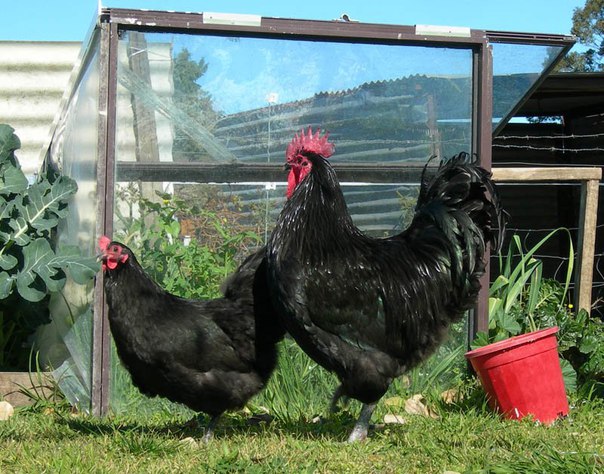For a newbie smallholder, choosing a chicken breed is easier said than done. There is a confusing variety that is available. So what are the factors that should influence your choice?
Perhaps one of the first decisions you must make is whether you are going to allow your “girls” to wander free range or are you going to keep them in a pen. If you have inherited a pen from previous owners it might not be very large, which will influence your choice of breed as size, in this case, might count.
The idea of a flock of chickens wandering your plot is very appealing. They help to keep down insects, including ticks and they have a healthy, varied diet, although you still need to give them some concentrates to ensure that they have all the nutrition that they need. There is also all that natural fertiliser for your plants. It is advisable to bring them in at night out of the way of predators or thieves. Keeping them in until mid-morning will also help to ensure that the eggs are laid where you can find them.
If they are free range your coop doesn’t need to be so large, which makes it cheaper to build and easier to keep clean.
The disadvantage of letting them range freely is that they lay eggs are laid in arbitrary places. Sometimes they are only discovered when your dog gently lays them at your feet, where they might explode because they are so old. Sometimes hens will settle on a clutch of eggs in some hidden spot in the garden, where they are vulnerable to predators. Free range chickens tend to eat your garden. Keep them away from your vegetable patch and any beds where you have planted flower seeds or seedlings.
Try Partial Free-range
Some people are able to manage partial free-range, where the chickens are allowed out for a certain time during the day, which sounds like the best of both worlds. However, someone will have to be there to let them out and bring them in again, which is not often possible.
If you choose to keep your chickens in a pen, make it as large as you can afford. There might be something on your plot already that you can use or adapt. If you need to start from scratch there are ready-made coops available for sale or there are DIY plans aplenty on the internet.
Layer, Broiler or Dual-purpose
You also need to decide if you want to keep chickens for their eggs or if you want a good roast. Or you can consider dual-purpose breeds that provide both eggs and meat.
Some breeds have been developed as pure egg-laying breeds. Breeders maximise their food-to-egg output. These birds are not so good to eat though.
There are various egg laying breeds or hybrids available for a smallholder and many of these are highly prolific layers that can guarantee you very high returns, should you decide to make some income from them. The main egg laying breeds/hybrids in South Africa are Lohmann Silver, Lohmann Browns, Hyline Browns, Hyline Silver Browns, White leghorns, Amber Link and ISA Brown Layers.
If you are keeping chickens for meat, some breeds make better roasts than others. Commercial meat birds, such as Ross and Cobb, grow incredibly fast on good quality, ad lib quantities of broiler feed over 8-10 weeks. These birds can get very big, very fast and end up looking like body builders. Other broiler breeds include Sussex and Cornish.

But most smallholders favour dual-purpose breeds, which will provide eggs and be good-eating. Examples of popular general purpose breeds are Australorp, Rhode Island Red, and White, Buff Orpington, Leghorn and New Hampshire. These all have bantam derivatives.
Choose a Chicken Breed That’s Hardy
Another factor to consider when choosing your breed is hardiness. This refers to the breed’s ability to sustain itself through all conditions, extremes of temperatures, drought and tougher times. It also refers to any genetic weaknesses, and its tendency to forage versus eating feed, often called “thriftiness.” Here our local indigenous breeds come into their own. Breeds include Boschvelder, Naked Neck, Venda, Ovambo, Potchefstroom Koekoek and Natal Game. They also tend to be dual-purpose.
There are people who choose a breed based on the colour of eggs that they lay or on what they look like. This latter factor will of course count if you want to show your fowls.
Temperament
Lastly, you might want to consider the temperament of the breed. Experts describe breeds as docile or aggressive. Still, among any given flock, temperament will be influenced more by pecking order than by genetic tendency. Those higher in the pecking order are the more aggressive birds. Those lower in the order are more submissive and docile.
Some breeds are more “flighty” and high-strung than others as well. If you have small children, picking a particularly “docile” breed might be a good fit. The docile Australorps and Brahmas are popular.
While there are many different breeds available in South Africa, it is often difficult to find pure-bred chickens.
To read more poultry click here.
To receive all our notices and each edition of SA Smallholder register here.

